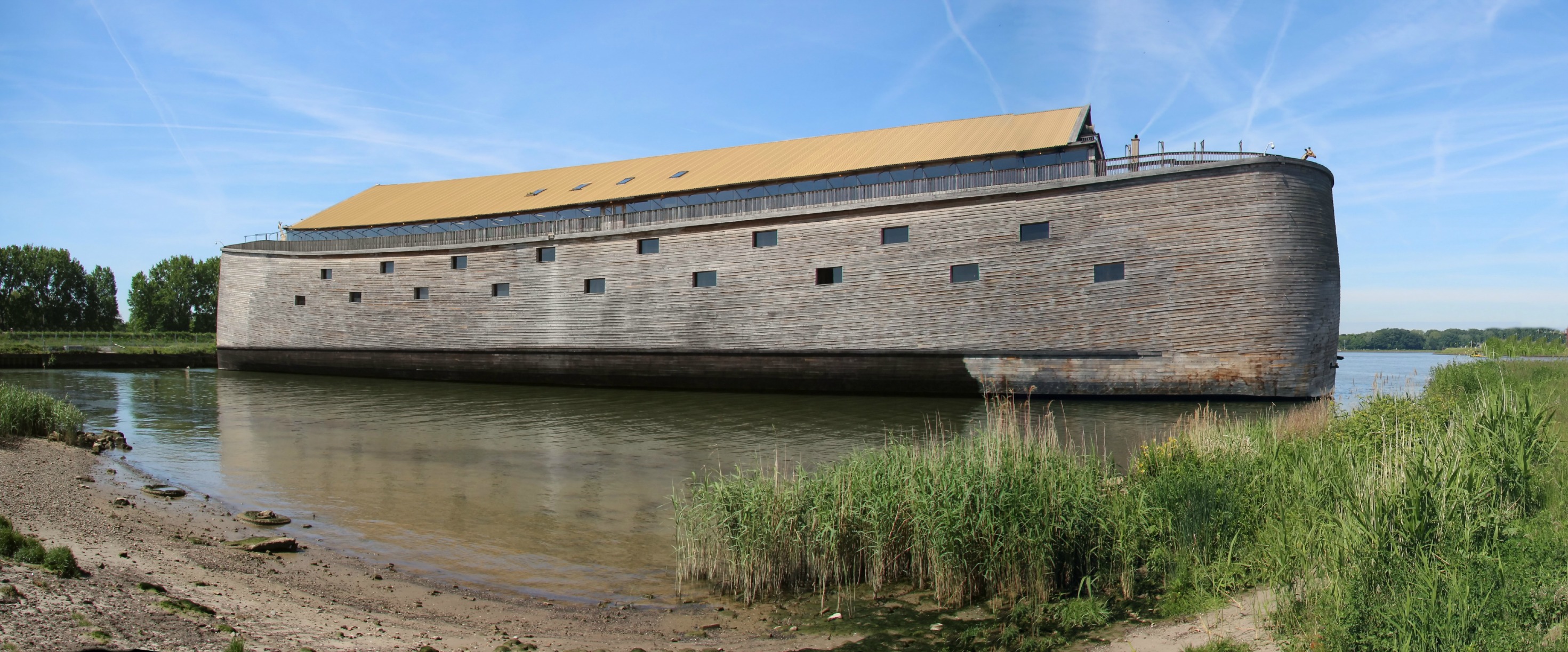“The waters swelled so mightily on the earth that all the high mountains under the whole heaven were covered; the waters swelled above the mountains, covering them fifteen cubits deep…
…He blotted out every living thing that was on the face of the ground, human beings and animals and creeping things and birds of the air; they were blotted out from the earth.
Only Noah was left, and those that were with him in the ark. And the waters swelled on the earth for one hundred fifty days.”
A Great Flood
The account of Genesis tell of a monumental flood that describes the earth being plundered by the ‘fountains of the great deep’ when God let loose on his creation. We can only imagine the catastrophic destruction that took place. Modern floods – though devastating to both life and land – pale in comparison to the cosmic demolition that this flood brought about.
Flood Geology is a branch of ‘pseudoscience’ that deals with analysing features of the Earth which have been shaped by the Genesis flood. The scientific community considers flood geology to be ‘myth’ and ‘falsifiable’ because it is seen to contradict mainstream science.
However, mainstream science has provided evidence which reinforces the idea of a global flood, such as is described in the Old Testament.
Evidence For The Flood
-Flood Stories-
The story of Noah’s Ark and the great flood is so famous that even young school aged children are familiar with Noah and his ‘Arky Arky’.
What children and some adults aren’t aware of, is that ancient flood legends exist in every corner of the earth. Many of these stories contain elements that are common to all of them:
- the construction of a boat in advance
- one family that is spared
- some amount of animals that are kept out of danger
- a rainbow
- the release of birdlife to determine if the water has subsided and the destruction of humanity
These are all examples of common themes that appear. When a famous Babylonian text – The Epic of Gilgamesh – is compared to the story in Genesis 6-9, the similarities in the two flood stories are remarkable.
The overwhelming consistency amongst these traditions indicates that they have derived from the same origin. In other words, after one global flood, an oral tradition developed which was passed down through a kind of ‘Chinese whispers’. These stories were eventually written down in different parts of the world, by people living within different cultures. What is left is a mosaic of stories which have different features and nuances, but which ultimately reflect the one event.
Since we know that shortly after the flood was the scattering of languages at Babel, it seems likely that this played a part in the way the story was orally developed and altered as it was passed down through generations.
-The Black Sea-
The Black Sea, located in South-eastern Europe is famous for its concentrated salt level, but scientists are now claiming that it was once a freshwater lake before an enormous flood deluged it.
The most recent proponent of this theory is Robert Ballard – an underwater archaeologist who rose to fame after discovering the underwater wreckage of the Titanic in 1985. Ballard acted from a hunch that The Black Sea must have preserved items from antiquity because of its concentrated salt intensities and lower oxygen levels. When Ballard and his team unearthed an ancient shore line, this was an indication that a catastrophic event took place in the Black Sea.
The volume of water that caused the flood into The Black Sea is said to have been 200 times more than that of Niagara Falls. This caused the original shoreline to plunge underneath hundreds of feet of salt water. This theory is reinforced by the fact that there are layers of freshwater molluscs below the surface of the Black Sea. By carbon dating these shells, Ballard believes the timeline for the flood to have taken place around 5,000 BCE. Further to his findings, is the discovery of a vessel, and one of its crew members in The Black Sea. The ancient shipwreck is said to be perfectly preserved, along with the bones and teeth of the seaman.
-Fossils-
Rock layers all over the world are filled with fossilised marine animals, insects, spiders, amphibians and plants that are buried in places miles above sea level – including the walls of the Grand Canyon and high in the world’s tallest mountain range – the Himalayas.
The presence of these fossils are silent testimonies to the waters that flooded over every continent before being buried in massive flows of sediment as a result of powerful flooding.
Rock layers across every continent also show features that indicate they were deposited very quickly. Some strata within the Grand Canyon show clear signs that sand was deposited by huge water currents in a matter of days. In order for these layers to be deposited so extensively implies a global flooding of the continents.
Of these layers, there are large amounts which show evidence indicating that the rock layers were still wet when deposited. Rocks do not bend; they shatter and break because they are hard. Yet, in whole sequences of rock strata, we find bends without any fractures indicating that the rocks folded and rippled as if they were wet and pliable before setting as hard rock. This is best demonstrated by the Tapeats Sandstone in Grand Canyon which is folded at a right angle without any evidence of breaking.
The only explanation for this is that the layers were laid in rapid succession and buckled while still soft.
What Does This All Mean?
The Bible speaks of the events of Genesis 6-9 as real, authentic events that took place under the divine providence of God, describing a global flood that destroyed all human and animal life, except for that aboard the ark.
If the Bible is the infallible word of God, then it’s not surprising that geological evidence all over the world confirms exactly what we are told happened in the days of Noah. The physical features of the earth and its geological structure clearly indicate an event that was catastrophic, and global in nature. The evidence is undeniable.
If you want to find out more about Creation Day, or help establish Creation Day as a recognized holiday, then head here to sign the petition!
Last week we looked at how dinosaurs fit in with the biblical account, and offered one possible reason for their extinction: the global flood described in Genesis 6-9.
To check out the last article go here.






